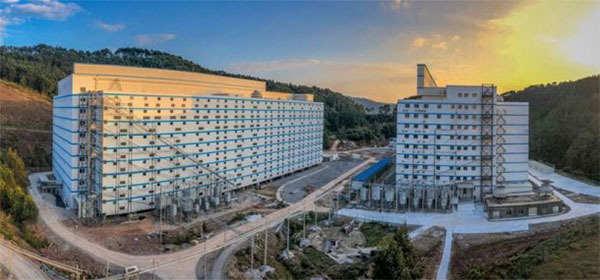Let’s take a look at 2019’s top 10 articles according to you, the Pig333 user.
# 10
Feeding lactating sows: a farmer's experience achieving 39 weaned pigs per sow (Nov 19)
A Spanish pig farmer let us in on his strategies for achieving an impressive 39 weaned pigs per sow per year. He shared that good pre-farrowing feeding based on body condition and parity allows the sow to have enough energy for a quick farrow, and good colostrum production. He said we must stop setting feed curves based on the sows consuming average or below average amounts, because it means losing potential in the other half of the sows.

# 9
Variability of the chemical composition and nutritional value of soybean meal (April 18)
We learned that the chemical composition and nutritional value of soybean meal can vary depending on its processing, storage conditions, and origin of the bean – meaning soy from different countries may present bigger than expected nutritional differences. The swine feed manufacturing industry must take into account the nutritional variability of the soybean meals available in the market.
# 8
Impact of ASF in China on pork exporting countries: many balls in the air (Jan 29)
At the start of the year, (late January) US economist, Dennis DiPietre, described understanding the global impact of the ASF outbreaks in China on pork exporting countries as a juggling act with lots of balls in the air. Some of those proverbial balls included pork supply, consumption, and purchasing power in China; the US and China trade war; and globalism. He discussed that demand for pork in China would likely fall faster than its current rate of growth deceleration, due to reduced income and income uncertainty of the Chinese middle classes. He said next year there will be even more balls to juggle.
# 7
African Swine Fever: Global swine professionals share experiences of this old-new friend (July 29)
Four industry professionals interviewed by Pig333 shared their personal experiences and perspectives on managing the challenges of ASF on the field, offering insight into different countries’ attitudes toward the situation. Baltic swine veterinary consultant, said in his experience, commercial farms viewed ASF as a threat to their profits, while backyard farmers were not as concerned. Dr Karbowiak, from Poland, shared that ASF first appeared 3 years ago so his clients now are used to working with the threat nearby. Dr. Kolbasov of Russia observed that if a swine producer is not interested in the external market, unfortunately, ASF isn’t a concern for him. EU-based consultant, Mr Corns thought all farms were affected by ASF, even if they weren’t infected by ASF.
# 6
China Exuberance: The only sure thing is that China will be eating a lot less pork (April 16)
Some months later, US economist, Dennis DiPietre cautioned against overestimating opportunity with China's struggle with ASF. He explained that, in the US, only 25% of the total production weight of pork enters the export market, and this isn’t all whole carcasses. Chinese consumers may feel the need to switch proteins, even though ASF cannot infect humans. The Chinese economy has slowed, also decreasing demand for more expensive protein. With the size and scale of the ASF problem in China, DiPietre wouldn’t be surprised if Chinese permanently shift their protein consumption patterns.
# 5
A picture is worth a thousand words (or more!) when it comes to farm biosecurity (Sept 16)
This article contains three animated videos that help us visualize how biosecurity can either track disease into the farm or stop it in its tracks. The short video clips clearly demonstrate the right and wrong biosecurity procedures in three scenarios: farm entry, load-outs, and at the perimeter fence. Disease is represented by the color red and we can clearly track the red footprints leading up to the barn. These videos are an excellent training tool and even an extremely helpful reminder for seasoned staff, especially in the context of ASF.
# 4
Inevitably, China drags the whole world (April 1)
Guillem Burset, from Spain, talked us through the intense rise in pork prices and the importance of the processing sector making an effort to transfer the rises in price to the final product as soon as possible. He claims the survival of Spanish pork processing companies will depends on their ability to transmit the required rises to their finished products, a problem still unresolved.
# 3
How much ASF virus does it take to cause an infection through intake of water or feed? (1 October)
This is a legitimate question in a world where feed ingredients are marketed globally. For the first time, a minimum infective dose is established to cause an ASF infection. In light of this, Enric Marco calculates how many infected dead pigs would be required to be thrown into the Danube River for the water to reach an infective dose. Let's just say its a lot. Do you want to know how many?
# 2
Are we ready to recognize African Swine Fever in the field? (May 21)
Early detection of ASF is critical, but it can be a challenge due to the lack of specific clinical signs. The four possible different presentations of the disease are described (these vary depending on the virulence of the strain and the route of exposure). Along with photos from a clinical case, the author recounts his personal experience in Russia with ASF first appearing subclinically.
# 1
Report: Yangxiang, the 9-storey farm (October 22)
It’s no wonder this was our most viewed article of 2019. Everyone was curious to know how a massive, 9-story farm in China can house 28,000 sows. The article explains the fascinating system’s biosecurity, management, movement (it involves a pig elevator), and feeding. The system also counts on intense biosecurity. Before visiting the farm, one must spend 3 days in an apartment at the company’s headquarters. The farms, located in the mountains, can only be accessed by a private road and after two vehicle washes. There is a separate exit road for vehicles leaving the farm. Amidst the ASF crisis, this wonder stole the show as being the most viewed article on the Pig333 website during 2019.










